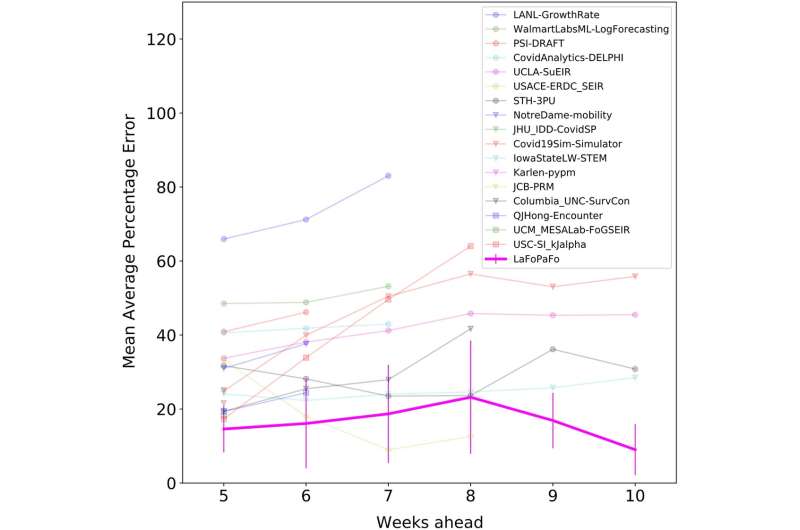
How many new COVID-19 cases will be in the ICU three weeks from today? University of Alberta scientists are using the wealth of public health data on COVID-19 to build AI-powered tools to help project and combat the pandemic.
“Our team is using ideas from epidemiology and machine learning to develop tools to forecast the number of future cases in a region,” said Russ Greiner, professor in the Department of Computing Science and fellow at the Alberta Machine Intelligence Institute (Amii). “We predict this number by applying data that is known today about a given region to a model learned from earlier data of that region and other case patterns from around the world.”
The algorithm projects possible COVID-19 case numbers up to 10 weeks in the future by incorporating many types of data, including current numbers of cases by date, population demographics, temperature and policies over time—such as school closures, restaurant closures and travel restrictions.
Diverse data provide a fuller picture
“We can use this same approach to predict other important values, like the number of ICU admissions in three weeks or the total case numbers and trends,” explained Greiner. “The predictions by this tool could then be used to inform policy.”
The projections are made using a machine learning model—an AI-powered tool trained on large amounts of data. By looking at patterns both in Alberta and in other parts of the world, and at how the many variables affect case numbers, the machine learning model sifts through the data to determine the strongest predictors of case numbers and make its own forecast based on the current situation.
“The idea of predicting the spread of a disease is not new,” said project lead Pouria Ramazi, a former post-doctoral fellow at the U of A who is now an assistant professor at Brock University. “Many predictive models have been developed and some are successful in forecasting the near future. However, making long-range predictions requires new methods, because most time-invariant assumptions in traditional models fail. This is where we hope machine learning models may find those ‘hidden’ relationships and patterns that we could not identify.”
“This pandemic is a horrible situation, which has literally affected the entire world. It would be wonderful to see this burden lifted and life get back to normal,” said Greiner.
The study, “Accurate long-range forecasting of COVID-19 mortality in the U.S.,” was published in Scientific Reports.
Andrew Lyle, University of Alberta

